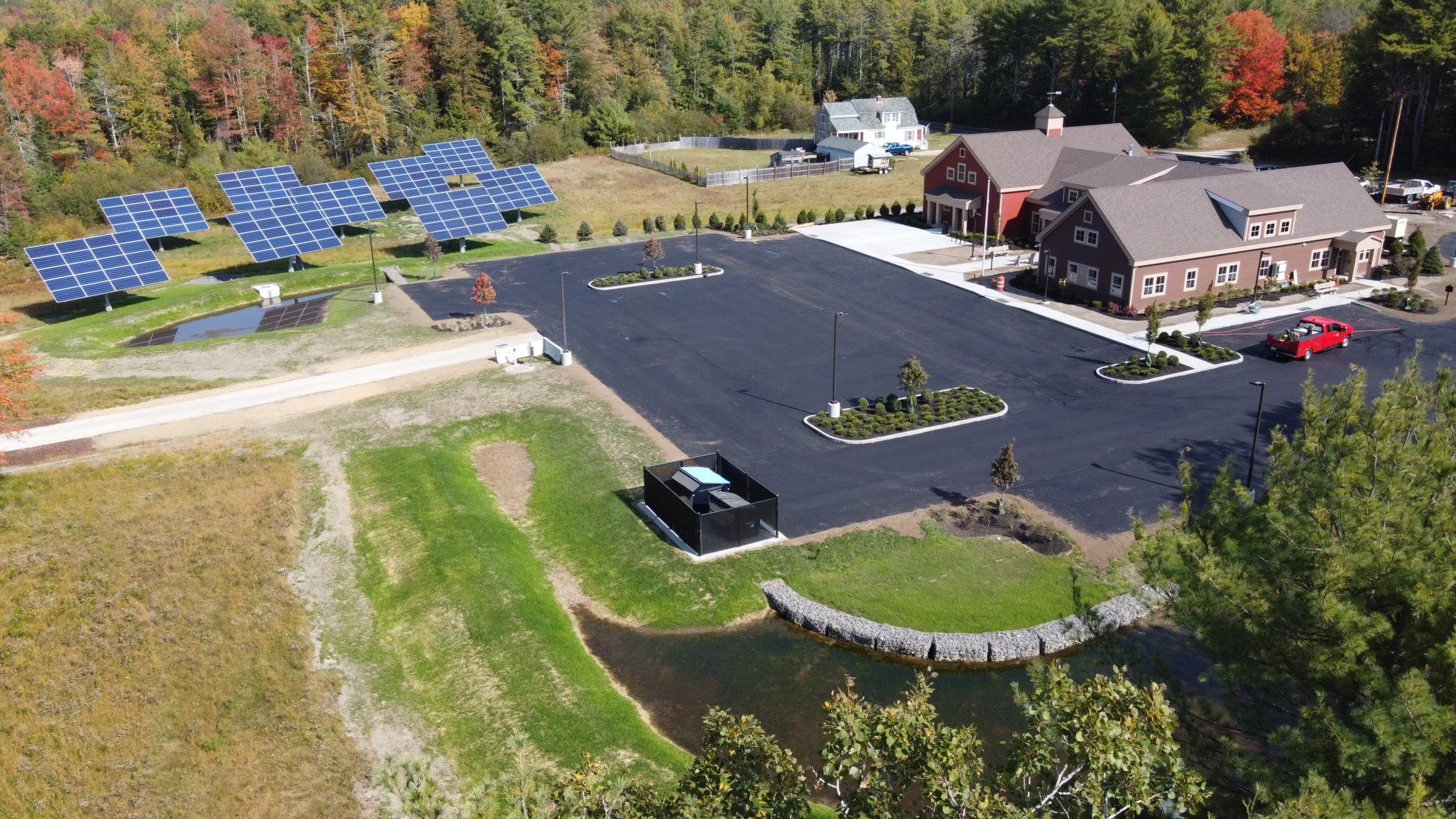Naoto Inoue
Naoto Inoue | Maine’s green building pioneers
Photo: Elise Klysa
NAOTO INOUE entered the renewable energy field in the early 1970s, and has been a trailblazer ever since, from solar electric and thermal energy to wind and hydropower to high-performance building and energy efficiency.
His Arundel-based company Talmadge Solar Engineering has designed, managed and consulted on projects large and small, including a key aspect of solar installations: financing. In the early 2000s, when discount renewable energy was not considered financially feasible, he developed a solar power purchase agreement financing model for private New England companies, which has enabled these businesses to be early adopters of solar power.
Inoue’s tireless work and fertile mind have inspired other likeminded entrepreneurs. Longtime business associate George Stone, who, with his wife Holly, has owned and operated Medomak Family Camp in Washington, Maine for 28 years, met Inoue 15 years ago when the Stones were looking to install a solar power system on the 360-acre property. They now offset 90% of the camp’s energy needs with solar power. That meeting, says Stone, changed his life. “I wanted to be an active part of what the man does, vis à vis green, high-efficiency envelopes, and we’ve had an ongoing dialogue ever since about improving the quality of the world through renewables.”
On a perhaps deeper level, Stone is also deeply impressed by Inoue’s intellect, drive and vision. “He has an amazing, inquisitive mind [and has devoted] his life to searching for ways to offset demand for fossil fuels—and anything else that will improve the planet. And he’s been doing this long before it was ‘sexy.’ I’m continually astonished at what he’s done—and continues to do. He helps me think in creative ways, and he’s touching parts of our world that others haven’t even considered.”
Note: the following interview has been edited for clarity and length.
Photo: Elise Klysa
What is your background and what sparked your interest in renewable energy and energy efficiency?
In 1976 I got involved with the anti-nuclear Clamshell Alliance in New Hampshire, which led to an interest in non-harmful power sources, which led me to solar energy. At the time, solar panels were thought to be impossible to create, but I started experimenting, and kept at it from 1976 to 1984. Then in 1992, I built my first high-performance envelope for a home that looked like a traditional New England saltbox house, but I made it double-studded and insulated with cellulose to R-40 and R-60. I also installed an 18,000 BTU, propane-fueled imitation woodstove and a radiant floor—which I never had to turn on, as the house was warm enough with the stove alone. A typical saltbox should have required a 150,000–200,000 BTU boiler, with then-standard heating equipment, but thanks to the envelope, I reduced the energy needed to heat it by 90%.
This was my aha moment, so when I moved into a new office in an 1890 building at Talmadge Solar, I built a 30-foot x 50-foot three-story addition with 20-inch-thick walls and a super-tight shell. I used custom-built trusses, a vapor barrier, and filled cavities with cellulose, easily achieving R-60 of insulation. I realized that a high-performance envelope was the key to making solar affordable. In the ’70s and ’80s, back-to-the-landers or wealthy people were the only ones buying solar panels, but I knew that if you could reduce 80-90% of the heating or cooling load, buildings could be 100% solar-heated or -cooled.
What was the green building landscape like when you were first starting out?
It was like yelling into huge wind coming off a Siberian lake. All through the ’90s, when I pitched high-performance building envelopes to my clients, their contractors would tell them that what they were unnecessary. No one wanted to listen to me until the Germans started focusing on these envelopes and there was lots of new technology coming into the U.S., making high-performance building much more acceptable to contractors.
What changes would you like to see in the field?
Faster acceptance of high-performance building principles and techniques.
What gives you hope about the current environmental crisis in terms of the role that green building can play?
The technology is absolutely mature, so it’s possible to live a 100% solar-powered life. If we all started building and living in high-performance buildings and driving our vehicles as if we were in a fuel-efficiency driving competition (as I once was—and won, with 93.6 MPG!), we would be able to gain 90% efficiency. Just imagine the enormous savings we’d achieve if half the country made a 100% commitment to complete net-zero living.
Inoue was instrumental in removing the road blocks to move forward with the ground mounted solar array at Arundel, Maine’s municipal building, which is now 100% heated and cooled by the solar produced on site. The array provides enough additional electricity to also power the town’s fire department and Department of Public Works. Courtesy photo.
This article appeared in the Fall 2022 edition of Green & Healthy Maine HOMES. Subscribe today!
Find Maine experts that specialize in healthy, efficient homes in the Green Homes Business Directory.









